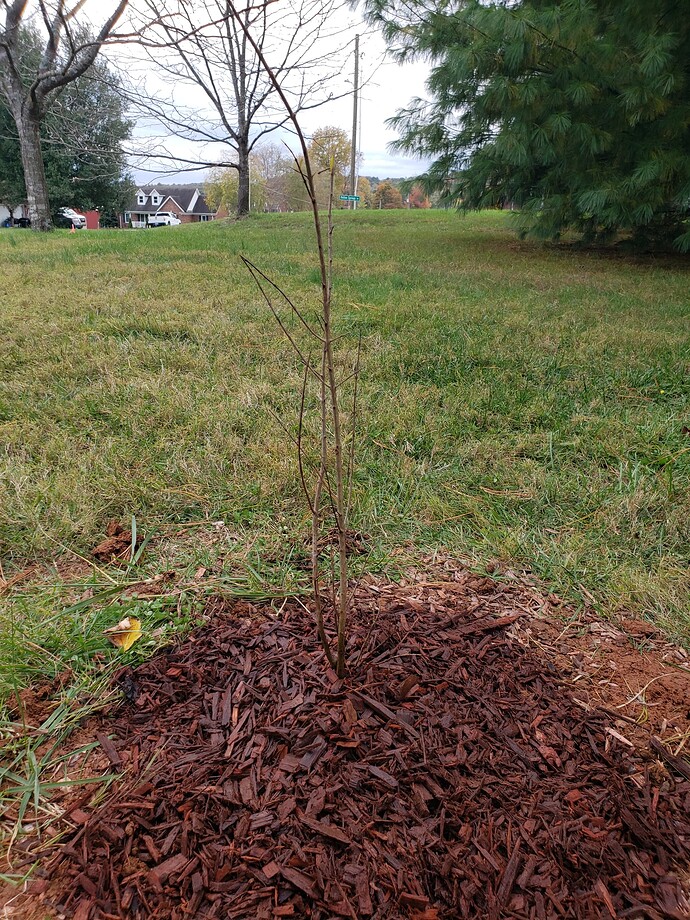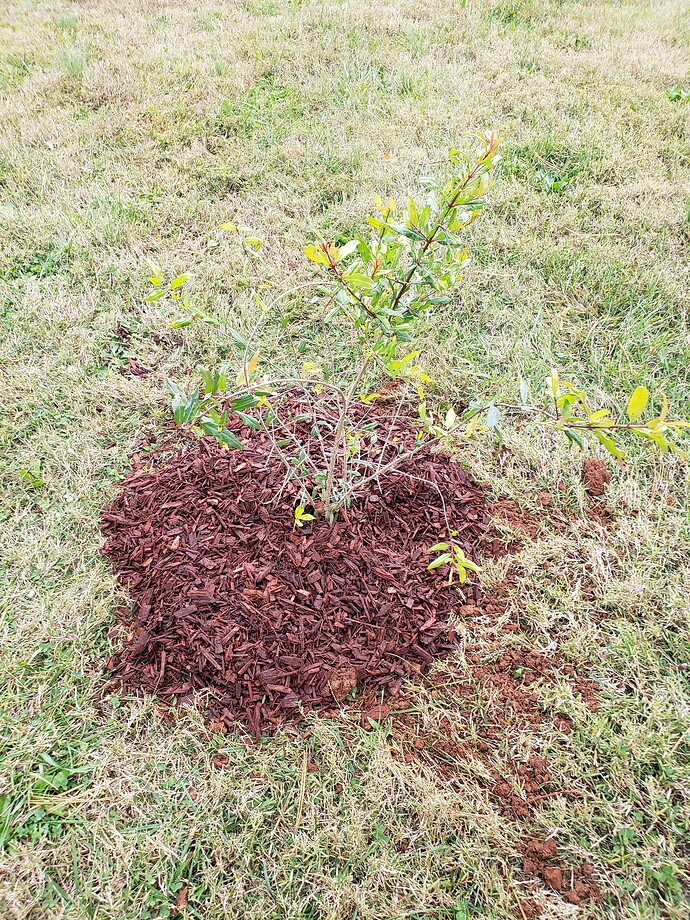Hi everyone, I live in Central Kentucky, used to be zone 6b but now 7a. I am looking to grow some cold hardy pomegranates. Any tips and tricks you all may have is much appreciated. I haven’t tested my soil, but willing to bet it’s mostly clay. I have a bit of a slope in the yard that is dry and I think that pomegranates might do well there. Growing season lasts from about May to November. I have a mystery Russian pomegranate variety that I got from Walmart, would you recommend I keep it potted for the winter, protect it and let it mature? Or should I go ahead and plant it in the ground? I read that you typically plant them in the spring so they have time to establish roots, but this tree is bigger than I thought it would be. I heard that planting in late fall is okay as well. I’ll attach a picture of it to this thread. Other varieties I have on my radar are Utah Sweet, A. C. Sweet, Sumbar, Lubimi, Agat, Sirenevyi, and Sverkhranniy. Does anyone have experience growing these? Which varieties do you all have that have done well?
Hey, welcome to the forum! I’m in zone 7b in NC, with high humidity and heavy clay. We have a slightly longer season, and I understand you get a different set of annual natural disasters (yay!) My pomegranate is Eversweet, an almost seedless clear-juice variety.
All that context aside, my experience has been that if the plant is big enough (as yours seems to be) then it’s safest to get it in the ground before winter. This is because in 7a and up the danger is less likely to be freezing soil and more likely to be baking soil or hot drought. The more established a plant’s root system can be before the worst of the summer hits the better things will go.
Amendment with lots of organic material (composted leaf mulch is my favorite) will be really vital, and if compaction is bad enough in the area you may also want to either mound the planting up a couple of inches or straight up use a raised bed. My Eversweet is in a berm with lots of wood chips for mulch. It’s ended up about a food above the surrounding soil.
In the town I moved up here from, about an hour south, a number of my neighbors had Wonderful, and there were a lot of plants around just labelled as Russian. They all seemed to grow fine in the ground. I don’t think I ever saw one kept in a pot more than a month while folks figured out where to put them.
I’ll have to look into the Eversweet variety, perhaps I could trial it one day to see how it does. As for the Russian variety that I have, I will have to get it in the ground soon. Thank you for the advice!
Happy to help. Good luck, don’t forget to post updates!
I have seen eversweet advertised as both 7 and 9 for hardiness. I’m also in 7a and gave up growing both pomegranates, loquats, and feijoas until my climate bumps into 7b. Many of us will be very curious which varieties work well for you!
Which varieties of pomegranate did you have and what were your main challenges getting them to grow?
I live in 6b/7a Utah and have two each of Kazake and Salavaski, first year trees. These came not even a third the size of what you have there, froze hard the week after planting (first week of April temps dropped to the low teens…shipment came earlier than I anticipated), then they bounced back and are now 4-5’ tall. I know of several people in my same zone in Utah who have succeeded with many varieties in the ground by taking care to wrap and heavily mulch them through their first two winters. Their trees are now several years old and well established at 10’ tall or more, with huge, glorious fruit. We just had our first hard frost in the 20s, and the salavatski leaves changed color and are now dropping. The Kazake leaves are still mostly green, but starting to turn. I plan to wrap and mulch them for the winter this weekend.
I’m in 7a, recently upgraded to 7b, but our winters are highly variable here in the desert. The issue I’ve had is that even well-established varieties wake up too early with late winter warm weather and then die to the next frost. I’ve been gathering varieties to do mass trials. So far these have lasted two years (but I’ve had others in the past that went more than two years before expiring one spring).
Rannii
Kazake
Sumbar
Suhr Anor
Afganski
Salavatski
I have 20 varieties with documented hardiness being sized up for trial, but it will be years before I have anything that looks like data.
I had plenty of varieties planted in NYC, and as far as I know only ‘Kaj-Acik’ has produced in ground there, although the person who I had gotten the pomegranate varieties is no longer working with the charity that took in the pomegranate varieties. I am hoping that eventually I will be able to get new updates. The charity is still recovering from the pandemic. I am guessing that ‘Granada’ might be another great choice. As well as ‘Belbek’ which will be available as a plant, I am going to be giving the variety to a nursery, you could later buy it from that nursery.
Fingers crossed the varieties I picked out will do well here. I went ahead and bought the Utah Sweet and Sumbar varieties. Utah Sweet has arrived. The leaves have fallen off but I did a scratch test and it is still alive. Here is a pic. Hoping to get it in the ground tomorrow.
Alright everyone, I got the trees in the ground today. I hope they will survive the winter! I picked a nice dry spot up on a slope that gets lots of sun. I also have a small greenhouse, so I may start growing cuttings sometime in the future.
If you do not winter protect them for at least a couple of years I would bet you’ve wasted time and money. I removed all Wonderful plants because they died to the ground even with protection, but all others have required as much protection as my figs Also in 7a.
I think if we get a particularly bad winter, I will have to protect them. Is there a solid method for when they are already in the ground? I knew it may not work out here in the first place, but I’m willing to try it anyway!
In 7A they will need protection but it is well worth it, My figs which I winter cover are more productive than my apricots and plums because I live in a late freeze area. Straw, old hay, leaves or woodchips work, followed by an old blanket or tarp get the Afghan-Russian varieties through zone 6 temps. Not wonderful.though.
I think you will need to protect them even in a normal winter.
Would I need to cover the trees each winter, or just until they mature? Thanks everyone for the tips, I appreciate it!



